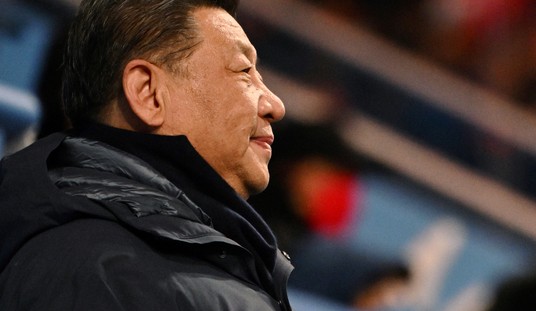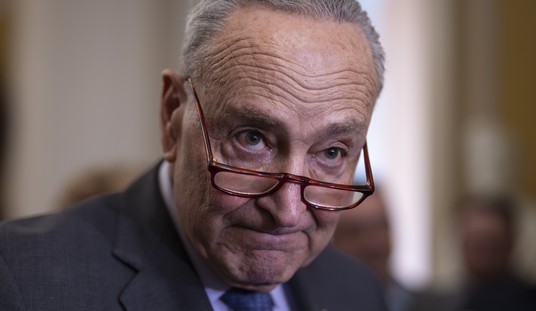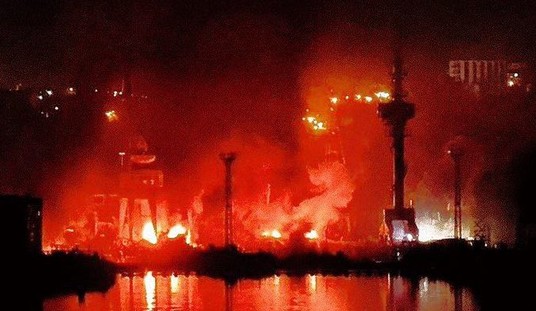We have reached a place where a newspaper reader must be wary when reading any given story. Why is this story appearing now? Why are certain people quoted and not others? Why was the “news” in this story omitted from one covering the exact same incident almost three years ago?
Maintaining such a level of skepticism is especially important when reading the Los Angeles Times and its coverage of the Los Angeles Police Department. My suspicions were immediately aroused when I saw the following headline on the Times website Friday morning: “Excessive force, cover-ups: LAPD whistleblower expands ‘SWAT Mafia’ allegations.”
The “whistleblower” referred to is Tim Colomey, an LAPD sergeant formerly assigned to the Special Weapons and Tactics team. He is suing the city and the police department, alleging all manner of improprieties within the SWAT team, including, if it were true, what could only be described as the execution of an unarmed man.
The story begins thus:
Anthony Soderberg was wounded, no longer armed and positioned precariously on a steep embankment when Los Angeles Police Lt. Ruben Lopez radioed to the surrounding SWAT team that the mentally ill man they’d just flushed from a nearby home remained a threat and must not be allowed to leave.
SWAT Sgt. Tim Colomey, a crisis negotiator standing next to Lopez in the command center, was stunned — interpreting the remark, as he knew other officers would, as a kill order.
“What the f— did you just say?” Colomey asked Lopez, just before the barrage of gunfire erupted.
“It was like pop, pop, pop, pop, pop, pop, pop,” Colomey recalled. Officers outside “just started blasting away.”
Big if true, as the saying goes. Alas for Colomey, it isn’t.
I wrote about Colomey’s lawsuit and the Soderberg shooting back in August 2020, when I responded to a similarly sensational and similarly laughable L.A. Times story. And so we must ask, what has happened in these intervening years to thrust Colomey and his allegations back into the news? Nothing, as best I can determine, yet the L.A. Times suddenly devotes three bylined writers, a graphic artist, and more than 3,600 words to the story, which I expect to be given prominent placement in the print edition this weekend.
The trial for Colomey’s lawsuit is scheduled to begin in September, and I speculate that his attorney, Greg Smith, found this an opportune time to reach out to his friends at the L.A. Times and feed them a few more sensational tidbits from Colomey’s deposition, perhaps to motivate a settlement, or perhaps to plant some seeds in the minds of potential jurors. And for their part, as I have pointed out many times here on PJ Media, the L.A. Times is eager to print stories about misconduct within the LAPD, real or imagined.
And the misconduct Colomey alleges is, in my view, imagined. As I wrote in 2020, the statistics on the LAPD’s SWAT team belie his allegation that there is a “culture of violence” within the unit. In the 10-year review of the unit’s activities submitted to the police commission last year, it was found that there were nearly 1,400 deployments, which included call-outs for spontaneous events and pre-planned operations like high-risk search warrants. In all of those deployments, force of any type was used in a mere 8%, and deadly force was used in only 1.5%. When you consider the fact that the SWAT team is dispatched only when certain criteria are met, among which is that the suspect is believed to be armed, these figures are remarkable and indeed enviable.
As for Colomey’s tale that was related in the opening paragraphs of Friday’s L.A. Times story, I am confident the facts are other than as presented. Colomey’s characterization of Lt. Lopez’s direction that Soderberg “not be allowed to leave” would most assuredly not have been interpreted among the team as a “kill order” as Colomey alleges and the L.A. Times unquestioningly repeats.
The incident occurred at a home atop a ridgeline, on the back side of which was a steep drop-off into a brush-covered ravine. Beyond that ravine were more homes, few if any of which had been evacuated. Lt. Lopez’s order, as the team understood, as any cop would have understood, was that Soderberg had to be contained and prevented from accessing any of those homes and initiating what might have been another barricaded suspect or hostage situation. Due to the terrain, conventional containment methods with officers on the ground were impractical, so the decision was made to place SWAT team members on a helicopter, from which they fired at Soderberg after he emerged from the house. Though the team trains frequently in this tactic, this was the first and only SWAT deployment in which it was used.
Beyond the phantasmagoric nature of the allegation that Lt. Lopez had issued a “kill order,” there is the issue of Sgt. Colomey’s inconsistent accounts of what occurred in the Soderberg shooting. All LAPD shootings are exhaustively investigated by detectives from the department’s Force Investigation Division, who interview everyone involved and any witnesses. In his FID interview after the Soderberg shooting, Colomey made no mention of Lt. Lopez giving orders that in any way resembled the version presented in the L.A. Times. If Colomey had been as outraged by the order as he now claims to be, why didn’t he mention it to the investigators at the time?
Colomey’s allegation that the LAPD’s SWAT team is run by a “SWAT Mafia” requires some understanding of the team’s history and culture. Colomey came into SWAT after serving in another platoon in Metropolitan Division, within which SWAT is one of several entities. Sergeants assigned to SWAT have a limited role in deployments, with tactical operations planned by senior police officer “operators” within each element. Once devised, those plans go through the chain of command for approval, beginning with the sergeants.
Though as a sergeant Colomey outranked these senior officers, superior rank does not necessarily equate with superior expertise (in fact it almost never does). Colomey never served as an operator within SWAT and his expertise in the team’s operations was simply not as extensive as that of the senior officers. I’m speculating here, but my guess is that his input was not always given the level of deference he thought it deserved, and this rankled him.
The upcoming trial should be illuminating, but not for the reasons Sgt. Colomey thinks.










Join the conversation as a VIP Member